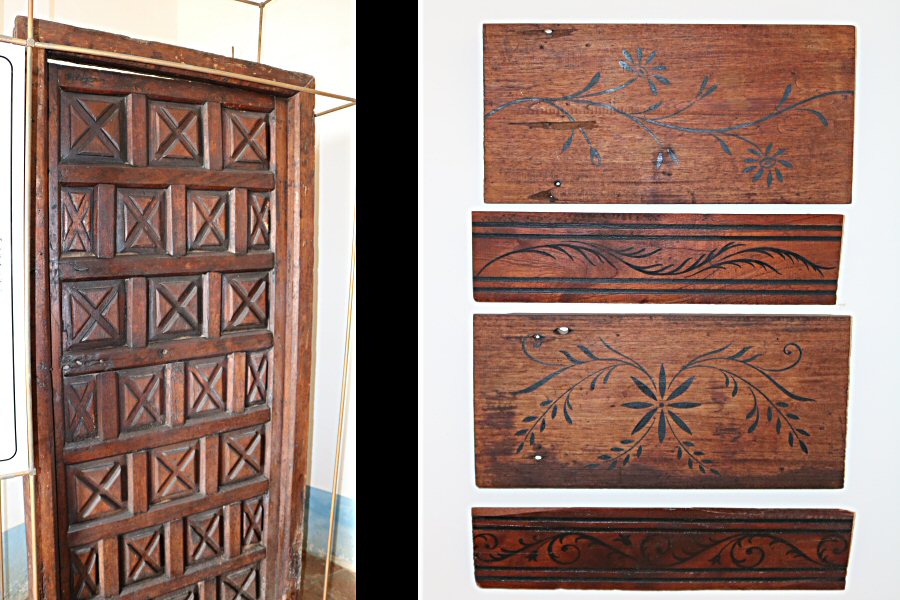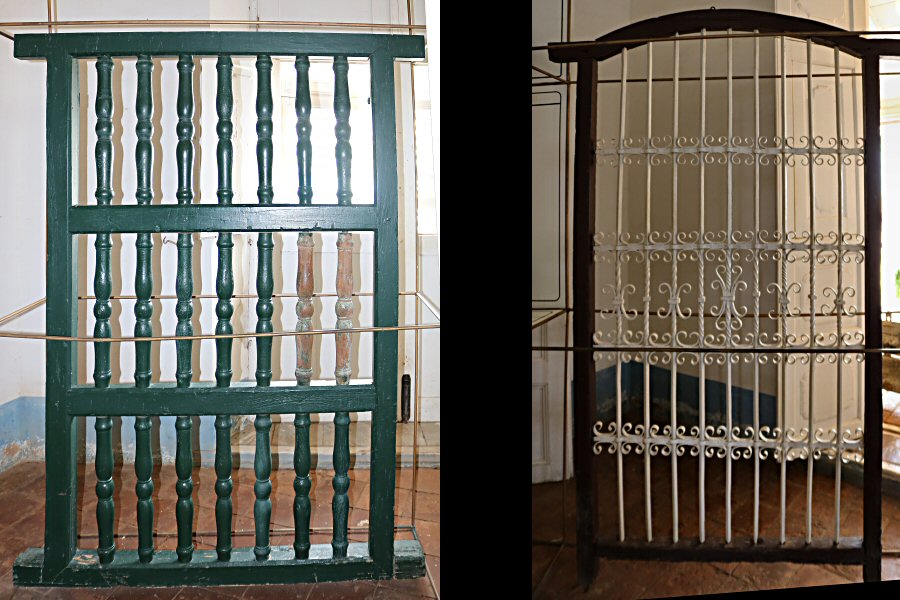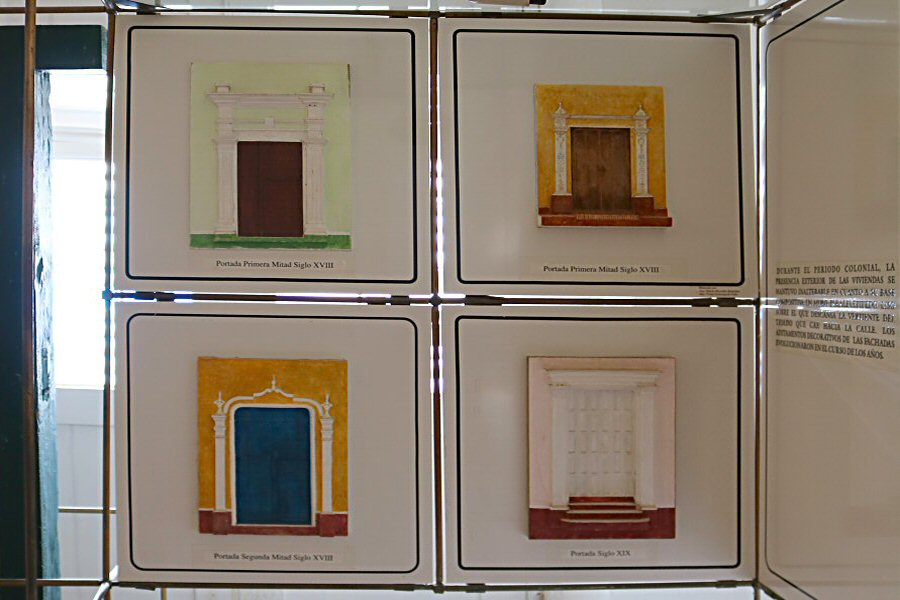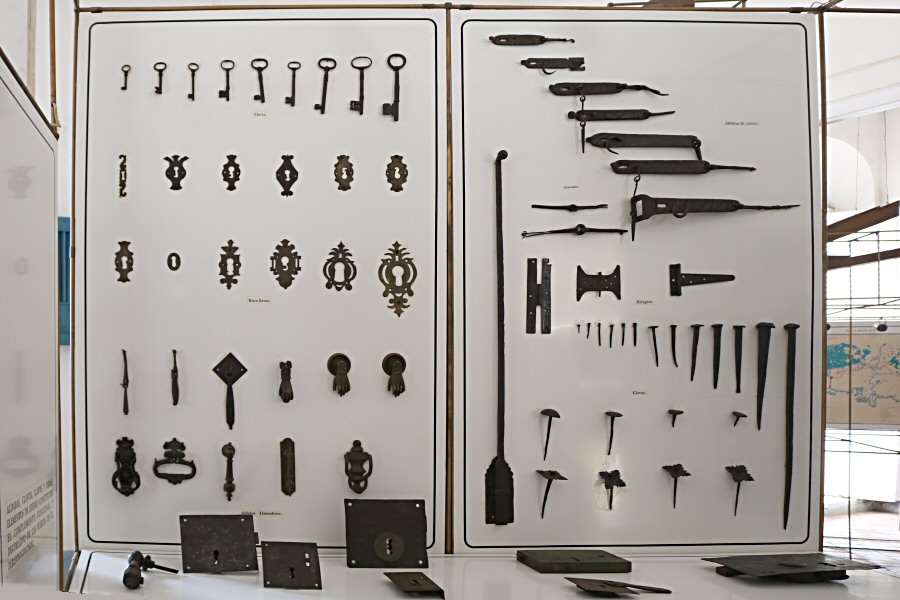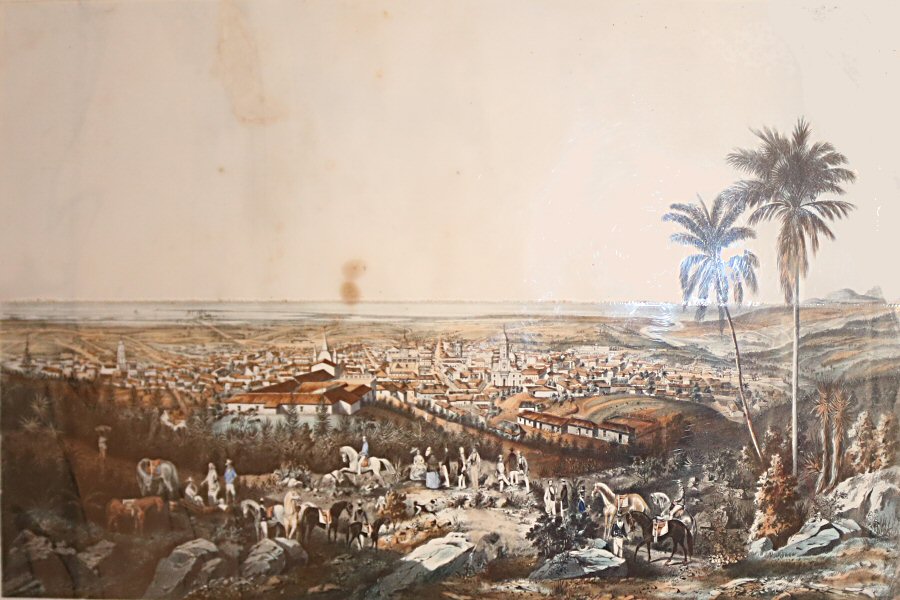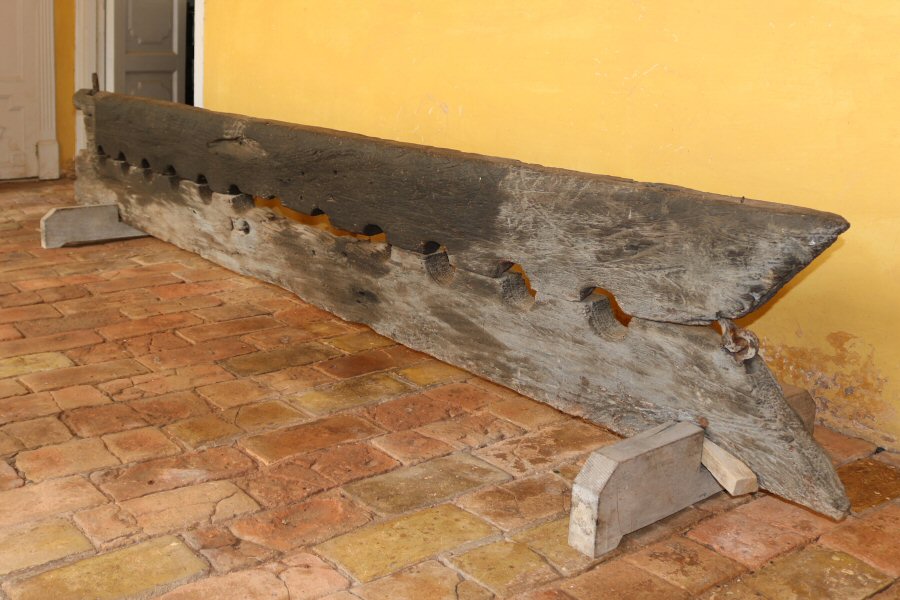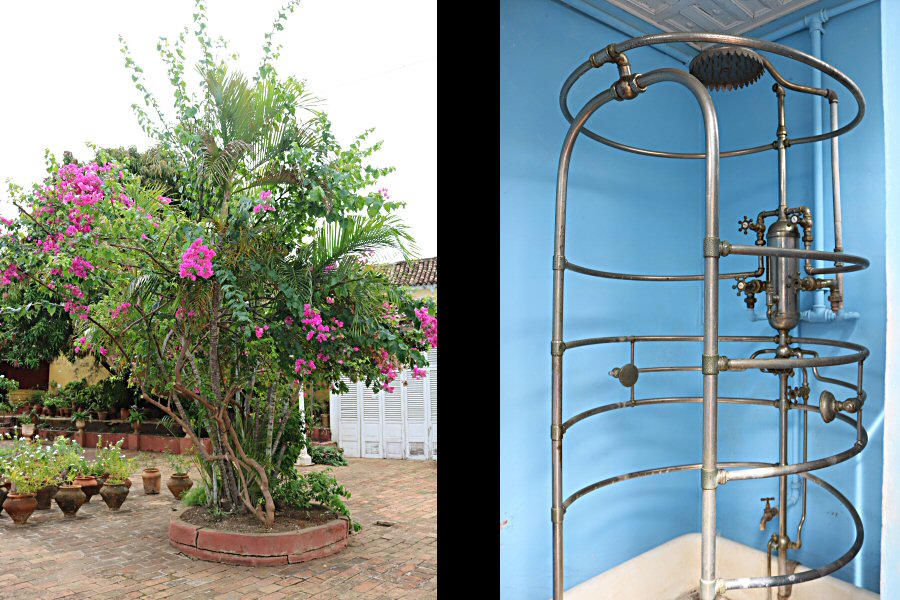
The Museum
The building show the typical grilled and shuttered windows, and feature an elegant portico with slim columns and a delicate wrought-iron balustrade. It is also called the Blue House as it was painted in sky-blue.
The museum’s collections include 1,300 pieces. In its eight permanent exhibition rooms, objects of exceptional value are displayed, including a ceiling carved in polychrome wood that imitates a Satyr, a fabulous collection of doors that includes paneled doors, board doors, and the so-called Spanish doors, a fragment of a mud wall, originally from a building that disappeared in the last century, and even a lithograph made by the Frenchman Eduardo Laplante that recreates a panoramic view of the Trinitarian town.
Of vital importance are the investigations into the most distinctive architectural features of Trinidad, such as the typology of eaves from the 18th and 19th centuries and the typological study of the collection of doors exhibited in one of the museum's rooms.
The collection of fixtures and fittings on display, all of them characteristic of colonial Cuban architecture, does provide some insights into the techniques and materials used to construct the typical Trinidad houses. The moldings, ceiling slats, ironwork, templated bricks, fragments of braces and different types of doors that are exhibited in the museum that is unique of its kind in the country, make it possible to understand the development of the local architectural culture during the colonial period that turned Trinidad into the Museum City of the Caribbean.
The mural decorations, the originality of the roof roof, its floors, its walls and its carpentry are exceptional.
The courtyard is vibrantly bedecked with plants. Don’t miss the US-made Art Nouveau shower, complete with thermometer and three shower heads, dating from 1912.
The Museum of Colonial Architecture of the city of Trinidad provides multiple services that aim to raise awareness of the city, enlightening and educating the public about Trinidad's historical and socio-cultural riches. It is possible to visit the museum with a guide. The museum also organizes a guided tour of the city. Tour of the rural settlements like Valle de los Ingenios that witnessed the old sugar factories which gave the old town of Trinidad its wealth, power, and its place in history, has a distinct taste.
The building show the typical grilled and shuttered windows, and feature an elegant portico with slim columns and a delicate wrought-iron balustrade. It is also called the Blue House as it was painted in sky-blue.
The museum’s collections include 1,300 pieces. In its eight permanent exhibition rooms, objects of exceptional value are displayed, including a ceiling carved in polychrome wood that imitates a Satyr, a fabulous collection of doors that includes paneled doors, board doors, and the so-called Spanish doors, a fragment of a mud wall, originally from a building that disappeared in the last century, and even a lithograph made by the Frenchman Eduardo Laplante that recreates a panoramic view of the Trinitarian town.
Of vital importance are the investigations into the most distinctive architectural features of Trinidad, such as the typology of eaves from the 18th and 19th centuries and the typological study of the collection of doors exhibited in one of the museum's rooms.
The collection of fixtures and fittings on display, all of them characteristic of colonial Cuban architecture, does provide some insights into the techniques and materials used to construct the typical Trinidad houses. The moldings, ceiling slats, ironwork, templated bricks, fragments of braces and different types of doors that are exhibited in the museum that is unique of its kind in the country, make it possible to understand the development of the local architectural culture during the colonial period that turned Trinidad into the Museum City of the Caribbean.
The mural decorations, the originality of the roof roof, its floors, its walls and its carpentry are exceptional.
The courtyard is vibrantly bedecked with plants. Don’t miss the US-made Art Nouveau shower, complete with thermometer and three shower heads, dating from 1912.
The Museum of Colonial Architecture of the city of Trinidad provides multiple services that aim to raise awareness of the city, enlightening and educating the public about Trinidad's historical and socio-cultural riches. It is possible to visit the museum with a guide. The museum also organizes a guided tour of the city. Tour of the rural settlements like Valle de los Ingenios that witnessed the old sugar factories which gave the old town of Trinidad its wealth, power, and its place in history, has a distinct taste.


